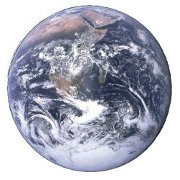
Custom Search
Animals in Djibouti
Djibouti is a North African country that shares borders with Eritrea, Ethiopia and Somalia. It lies just above the horn of Africa. Several interesting species of animals live in Djibouti, and have adapted to the country's climate and geology, which is that of a semi-desert.
One of the animals native to Djibouti is the Soemmering's Gazelle, a beautiful gazelle that's about three feet tall at the shoulder. They live in the brush of Djibouti and other countries in North Africa. Their conservation status is designated as vulnerable because they've been overhunted, and their habitat is being taken over by livestock.
The Oryx Beisa is a large antelope notable for its horns, which are very long -- they can be up to two and half feet -- and ringed. The Oryx Beisa can weight up to 386 pounds and stands about three feet high at the shoulder. They have a beautiful, gray-brown coat with black and cream markings, especially on the face, and a small mane. Like other antelopes, they're herbivores. They live in mostly female herds.
The African Wild Ass is a very rare animal, usually with a gray coat, a whitish muzzle, and primitive zebra stripes on its legs. There's also a stripe down the back. They are well suited to the habitat of Djibouti and have evolved to digest its sparse and tough vegetation very efficiently. They can even tolerate drinking salt water if they have to. The common donkey is thought to be descended from the African Wild Ass.
The ostrich is the largest bird on earth. The male is black with white plumes and the female is gray. Their feathers are so soft that they're famous for use as feather dusters. Ostriches are farmed for both their meat, leather and their plumes. Though the ostrich can't fly, it can run very fast, and can deliver a fatal kick. The male scrapes a nest in bare ground and the females he's mated with all lay their eggs there, though the male's primary mate rolls all the eggs that aren't hers out of the nest. Both the male and the female incubate the eggs for about forty days.
ostrich is the largest bird on earth. The male is black with white plumes and the female is gray. Their feathers are so soft that they're famous for use as feather dusters. Ostriches are farmed for both their meat, leather and their plumes. Though the ostrich can't fly, it can run very fast, and can deliver a fatal kick. The male scrapes a nest in bare ground and the females he's mated with all lay their eggs there, though the male's primary mate rolls all the eggs that aren't hers out of the nest. Both the male and the female incubate the eggs for about forty days.
One of the animals native to Djibouti is the Soemmering's Gazelle, a beautiful gazelle that's about three feet tall at the shoulder. They live in the brush of Djibouti and other countries in North Africa. Their conservation status is designated as vulnerable because they've been overhunted, and their habitat is being taken over by livestock.
The Oryx Beisa is a large antelope notable for its horns, which are very long -- they can be up to two and half feet -- and ringed. The Oryx Beisa can weight up to 386 pounds and stands about three feet high at the shoulder. They have a beautiful, gray-brown coat with black and cream markings, especially on the face, and a small mane. Like other antelopes, they're herbivores. They live in mostly female herds.
The African Wild Ass is a very rare animal, usually with a gray coat, a whitish muzzle, and primitive zebra stripes on its legs. There's also a stripe down the back. They are well suited to the habitat of Djibouti and have evolved to digest its sparse and tough vegetation very efficiently. They can even tolerate drinking salt water if they have to. The common donkey is thought to be descended from the African Wild Ass.
The

Click here for a list of endangered animals in Djibouti.
Even-toed ungulates in Djibouti
Beira antelope Grey duiker Lesser kudu Greater kudu Dorcas gazelle Common warthog Gerenuk Salt's dik-dik Klipspringer GemsbokCarnivores in Djibouti
African caracal Spotted hyaena Wild cat Honey badger Striped polecat Striped hyaena Serval African lion Asiatic jackal Leopard Black-backed jackalDolphins, porpoises, and whales in Djibouti
Chinese white dolphin Bridled dolphin Long-beaked dolphin Pygmy killer whale Fraser's dolphinBats in Djibouti
Heart-nosed bat Spotted free-tailed bat Lesser horseshoe bat Little free-tailed bat Lesser mouse-tailed bat African sheath-tailed bat Greater mouse-tailed bat African yellow bat Straw-coloured fruit bat Naked-rumped tomb bat Egyptian tomb bat Persian trident bat Sundevall's roundleaf bat Ethiopian large-eared roundleaf bat Egyptian slit-faced bat Large-eared free-tailed bat Trident batHares, pikas, and rabbits in Djibouti
Cape hareHorses, rhinoceroses, and tapirs in Djibouti
Grevy's zebraPrimates in Djibouti
Hamadryas baboonRodents in Djibouti
Speke's pectinator Somalia gerbil Unstriped ground squirrel Somalian gerbil Waters's gerbil Naked mole rat Crested rat Cairo spiny mouse Louise's spiny mouse Mullah spiny mouseDugongs, manatees, and sea cows in Djibouti
DugongAardvark in Djibouti
Aardvark Information about the animals living in Djibouti is brought to you by "List of countries of the world", your first stop in discovering all countries and animals of the world.
Information about the animals living in Djibouti is brought to you by "List of countries of the world", your first stop in discovering all countries and animals of the world.The animals displayed on this page are grouped in their scientific order. View also countries of the world ordered by:
- List of TLD's
- Country dialling codes
- Population
- Kilometers of coastline
- Square kilometers of land
- Square kilometers of water
- Birth rate
- Death rate
- Irrigated land
- Countries starting with A
Privacy policy